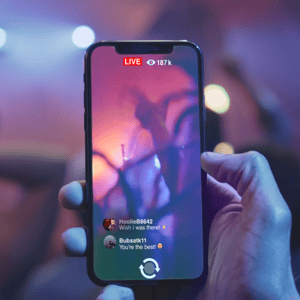Marketers often struggle to quantify the impact of video content on their broader goals. Why? Videos that lack an audience engagement strategy are unlikely to achieve marketing success and bestow any useful lessons about your campaign.
It’s sad but true, video content is the unsung hero of marketing departments all around the world. Time to prove its worth once and for all - and we’ll tell you how!
1. Try design thinking
‘Design thinking’ is a process of creating and testing innovative ideas to improve a product or service, based on a deep interest in the people who will use them. By considering your personas and creating something that addresses their desires and ambitions, you can achieve real audience engagement.
Ask these three questions to introduce yourself to design thinking:
- What’s it for?
- Who’s it for?
- How will you know if it’s worked?
First, decide on your video’s core purpose and outline in objective terms. Next, consider your audience. How do they see your brand, product or service? Finally, identify a way in which you can measure success. This should relate to the purpose of your video content – for instance, if the purpose is to attract attention on social media, you could measure success in terms of hitting a set number of likes, shares or comments.
2. Find a gap in the market
A ‘content gap analysis’ sounds complicated, but actually it’s just the process of reviewing content that already exists and discovering topics that haven’t yet been touched on. This will help you to produce valuable content and achieve strong audience engagement.
So consider: What is your target audience already watching? What’s the current market leader doing, and what could you do better? In an ideal world, your content should be different enough to stand out but familiar enough to be recognised easily by your audience.
3. Share content in the right places
Once you’ve created your video content, where will it live? With your website, social media accounts and third party streaming sites to choose from, it can be a confusing choice to make.
Let’s go back to the purpose of your video. This should tell you where the content belongs, and where you’ll see the best audience engagement.
Take ASOS as an example. The brand’s website features product videos as sales tools. This content is short, simple and supports sites visitor in making purchase decisions. In contrast to this, the ASOS YouTube account features longer form, lifestyle-centred content, which works to develop a strong brand image and connect with consumers on a deeper level.
It’s possible to create multiple assets for different uses all on one shoot. For instance, while you produce a long form TV ad, you can also produce a series of bitesize videos and stills to feature across all social channels, creating consistent brand content to use across every available channel. You can learn more about multi-format shooting here.
4. Optimise, optimise, optimise
Once your video is live, there’s still work to be done. It’s essential you monitor and optimise content regularly to ensure the best possible results for your brand. Without measuring your views, audience engagement rate and conversions, you won’t know how a video is performing, and where you can improve future content.
By approaching video production with a holistic approach, you’re far more likely to achieve the results you want. What’s more, your audience are far more likely to appreciate your content.





